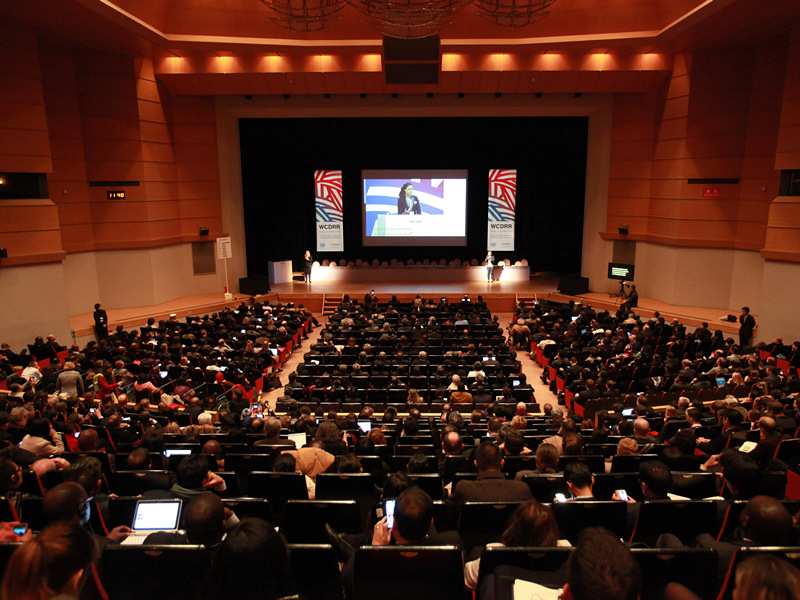
By Luis Burón B.
PANAMA CITY, Panama, March 18, 2020 – Those seated at the main table expressed joy and satisfaction on a cool midday in Sendai, Japan, when 187 member countries of the United Nations came together to adopt a new guiding framework for disaster risk reduction. Upon signing, these states ratified a commitment to create public policies to reduce and prevent disasters in partnership with the private sector.
Today marks five years since most of the world adopted the Sendai Framework for Disaster Risk Reduction (2015-2030) as the guiding document in their decision-making on disaster reduction.
"The Sendai Framework succeeded in establishing an important conceptual change: it introduces the international community to identification of risk reduction as the central concern, shifting the focus away from disaster reaction," explains Raúl Salazar, head of the United Nations Office for Disaster Risk Reduction, Regional Office - The Americas and the Caribbean (UNDRR).
Salazar adds that “this change in approach helps to establish the perception of disaster risk as a development-related issue so that the decisions made do not generate new risks.”
As Salazar explains, the Sendai Framework proposes a comprehensive understanding of risk reduction. It establishes a much broader field of action than the Hyogo Framework for Action (2005-2015) - the predecessor to the Sendai Framework -, which very briefly addressed the importance of risk reduction in reducing vulnerabilities to natural hazards.
“The Hyogo Framework for Action was born in 2005 during the decade of prevention. At that time, countries noted the increasing impact of disasters, which led to a return to poverty. Hyogo was not a commitment but rather allowed for a reflection on the comprehensive theme of scientific knowledge to contemplate disaster-causing phenomena and integrate it into the social sciences. It goes beyond studying why an earthquake or a hurricane occurs to understanding them not as isolated events but rather as mediating the human context,” Salazar explains.
The Sendai Framework then becomes the evolution of Hyogo. One of its most important differences is that countries adopted the Sendai Framework. Sendai also expands involvement in risk management. It incorporates civil society and the private sector. “The Sendai Framework is a process eminently linked to development,” emphasizes Salazar.
UNDERSTANDING THE RISK
The comprehensiveness with which the Sendai Framework presented risk management in turn opened a new portal for understanding possibilities of risk. That is, it exposed risk not only as a consequence of an event (natural or human) but also invited consideration of all the effects produced by an extraordinary situation in a chain of events. Simply stated: systemic risk.
Understanding this 'complex' risk, says analyst Allan Lavell, has been one of the main challenges of the Sendai Framework in the region. “Successfully differentiating the components of exposure and threat vulnerability has taken years. And it has yet to be explored as thoroughly as it should. The concept of systemic risk escapes many officials and planners,” he says.
Notwithstanding, there are cases that, in contrast, have developed an induction method towards understanding risk from the root of knowledge itself. “The Safe Schools initiative - which integrates various sectors: education, infrastructure, economy, finance, civil protection - improves the preparation of students to understand disasters from an early age. Conceptually, the Sendai Framework has contributed greatly to this reflection on the integration of risk reduction,” Salazar says.